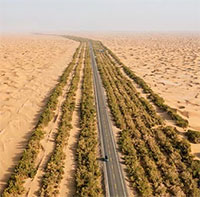Kola is the deepest borehole in the world, with a depth of 12,262 meters (40,230 feet). This borehole was drilled in the Kola peninsula of Russia starting in 1970 and completed in 1989.
In the 1960s, besides the great space race, the US and the Soviet Union also competed for power in another form, that is to explore “gates” that could lead to the center of the Earth, or at least especially as close as possible.
Projects to drill deep into the earth began in the 1960s. American scientists introduced the Mohole project, to understand the components inside the earth.
This project is named after scientist Andrija Mohorovicic , who found the depth where the contact between the crust and the mantle of the Earth.

Mr. Yuri Smirnov, a geologist and poet volunteered to protect the “Kola super-deep borehole” until his death at the age of 87. (Photo: Topic).
In 1970, the Soviet Union entered the race with a pit project called the “Kola Super Deep Borehole” in the port city of Murmansk, just outside the Norwegian border near the Barents Sea.
The initial goal of the project was to drill to a depth of 15 km underground. Although it was not possible to conquer this depth, it is by far the deepest man-made hole on land and the process of collecting samples still amazes modern scientists.
Among the ruins at the abandoned project site in the Murmansk province was a round object like a saucer. Beneath it, with a diameter of only 23 cm, is the world’s deepest borehole, called the ” Kola Super Deep Hole”.
The deepest man-made hole on land, located on the Kola peninsula of Russia, is more than 12km deep. For comparison, the depth of the Kola drill is equal to the height of Mount Everest and Mount Fuji combined. Meanwhile, the world’s deepest Mariana Trench is only 10,971 km deep.
Despite such an impressive depth, the Kola drill is actually quite shallow compared to Earth’s depth. In total, this drill has only penetrated about a third of the Earth’s crust and reached 0.2% of the distance to the center of the Earth.

Compare the depth of the Kola crater with many famous places such as the Mariana Trench, Mount Everest or the world’s tallest building Burj Khalifa. (Photo: Bored Therapy).
This project also took a lot of time to reach a depth of more than 12km. Drilling at Kola began on May 24, 1970 with the goal of drilling as far as possible. At that time, scientists predicted that the drill could penetrate about 15km.
By 1979, the project had broken all world records for man-made holes when it crossed about 9.5km. By 1989, drilling reached a vertical depth of 12,262km. The “Kola Super Deep Hole” officially became the deepest point that humans have ever reached.
However, by 1992 the scientists were unable to continue. The reason is that the temperature at a depth of 12 km has reached 180 degrees Celsius.
If digging continues to the target 15 km, the temperature there can reach nearly 300 degrees Celsius, which will definitely destroy any drilling equipment.

The cover for the deepest man-made hole in the world. (Photo: Topic).
Initially, the drill bit plowed through the granite with relative ease. However, since the drills reach a depth of about 6.9 km, this layer of soil becomes denser and more difficult to drill.
As a result, the drill bit broke and the construction team had to change the drilling direction many times. Engineers kept plowing, but the deeper the drill went, the hotter the Earth’s core became.
The Soviet Union persisted with the project until 1992, but was never able to drill as deep as they did in 1989. Finally, the drilling site was officially closed and sealed in 2012. 2005.
Although they were not able to reach the intended depth, scientists still discovered many interesting things about the Earth’s crust. They found that there is still water at a depth of 12km underground, which was previously thought impossible. Gases such as helium, hydrogen, nitro and even CO 2 were also detected during the drilling process.
The researchers believe that the water may have been forced out of the rock crystals by the extreme pressure inside the Earth.
They also discovered 24 new species of single-celled organisms, excavating rocks that date back 2.7 billion years. The discovery of creatures at a depth of 7 km underground opens the hypothesis that living organisms can withstand pressure as well as hot temperatures to adapt in the ground.

A core piece from the Kola drill bit and a piece of metabasalt rock more than 6 km deep in the Earth’s crust. (Photo: Pechenga).
The clearest evidence is that the microscopic fossils encased in organic compounds are surprisingly intact, despite the extreme pressure and temperature of the rock surrounding it.
Kola crater is still the deepest hole on land, but this depth has been surpassed at sea. In 2008, Qatar dug a hole 12,289km deep into the Al Shaheen oil field. In 2011, the Sakhalin-I project dug a hole 12,376 km deep into the waters off the Russian island of Sakhalin.
Above the Kola borehole is a rusted and sealed 23cm diameter metal cap. According to ABC, if it is possible to fall into this hole, it will take people 3-4 minutes to reach the bottom. Locals say the hole is so deep that it has been named “hell’s well” .

